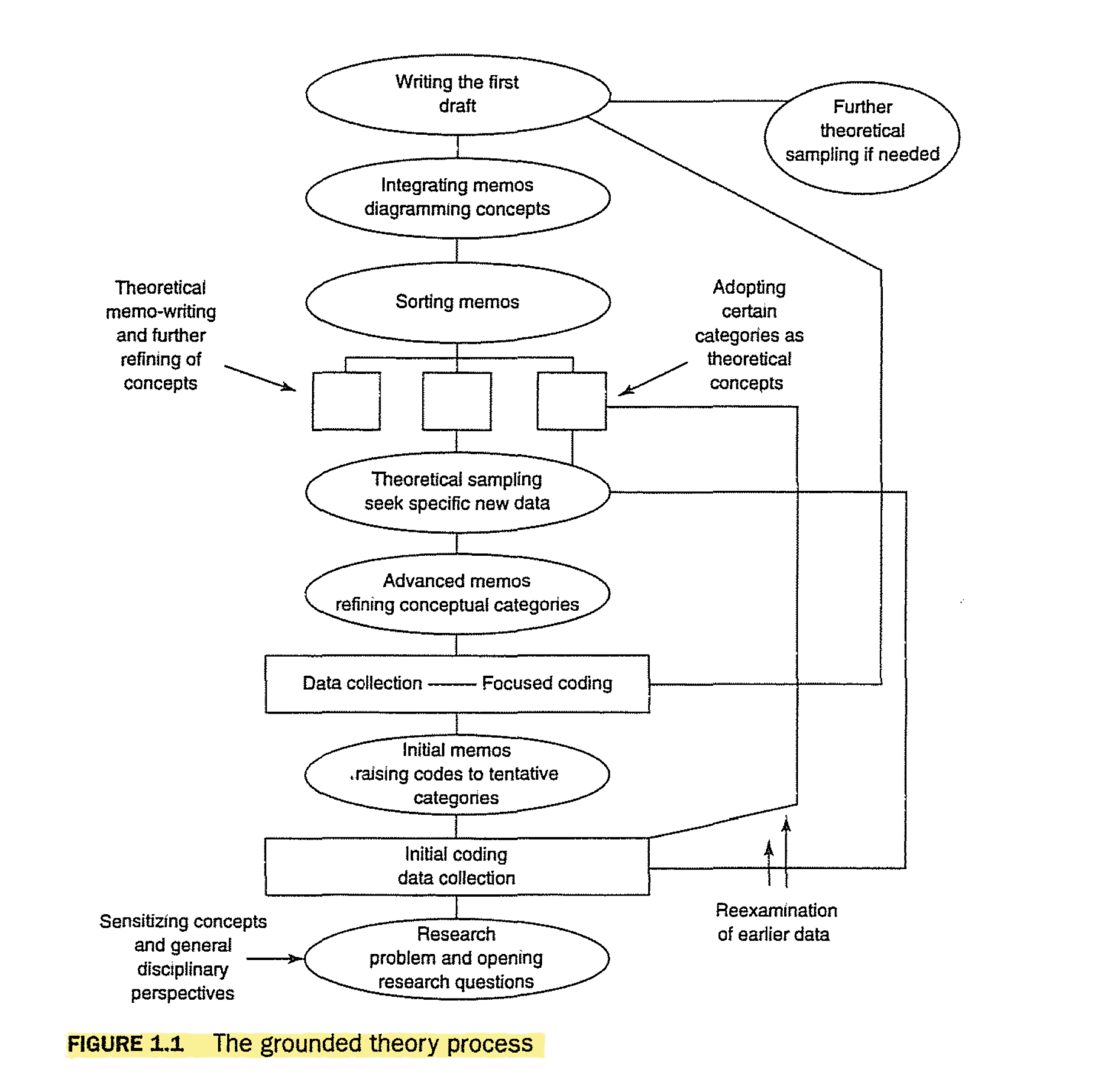Grounded theory is an approach to analyzing data by letting the powerful and important insights in the data emerge through deep, iterative reading. I loved using it in my Master’s thesis, but a recent project also illuminated how useful it might be to understand things outside of research, too.
If you’re not trying to publish the next great citation, the actual details of the process aren’t truly important. Grounded theory simply provides a pragmatic way of analyzing a mess.
Given its academic language, grounded theory may sound complicated, but it really isn’t. The basic work looks like this:
- State your assumptions and ideas about the data. Put them somewhere such that they are acknowledged at the outset and can then be re-examined later. This can help to externalize bias, encourage you to search for disconfirming evidence, or simply provide a trail for later auditing.
- Take a set of data. Could be dialogue (e.g., interview transcripts, social media posts), writing (e.g., articles, books), conceptual (e.g., ideas, products, solutions).
- Analyze the data:
- Examine each instance within the data. Review everything about it. Note whatever seems significant to you. These notes become your codes.
- For instance, maybe you’re reviewing a set of university course syllabi. Take the first course. Maybe you’ll note what the kinds of learning outcomes are. Maybe you’ll note if there are learning outcomes. Maybe you’ll note the number of modules, the kinds of assessments, the existence of groupwork (or how it’s done)—whatever. Note anything that comes to mind.
- Move to the next instance. Repeat. Anything similar to the previous instance? Anything new and noteworthy?
- Repeat for the rest of the instances.
- Analyze and sort the notes. Develop conceptual categories that help organize your notes.
- What different notes have you made? How might they be clustered? How do they differ from one another? Why are they significant? Which ones are more important?
- Write brief summaries (known as “memos”) about whatever you’ve observed in step 4. The goal of this summarization is to help you refine your thinking and add rich detail to the insights you’ve discovered. You also might note the kinds of questions that remain about whatever you’ve uncovered.
- Re-examine the data, following step 3 again, in the context of your review (step 4) and memos (step 5). You might pursue certain aspects of the data that have come about as a result of your earlier analysis (theoretical sampling; e.g., if an important theme emerged later in your first pass, do the earlier instances also illustrate that theme somehow?) Then repeat steps 4 and 5.
- Repeat step 6 as often as necessary, until you feel the data is “saturated” (e.g., there are no new themes emerging).
 Charmaz’s (2006) Grounded Theory Process. 1
Charmaz’s (2006) Grounded Theory Process. 1
You can do steps 3, 4, and 5 using any format you want. Here are some suggestions:
- Paper: Print out the data and use marker or post-it notes.
- PDF: Do the same as paper, only keep things digital.
- Spreadsheets: Paste your data into the left-hand column on a spreadsheet and make notes about each instance in the corresponding row. Later, duplicate the spreadsheet (to keep a trail of the research) and reorganize/delete/rewrite the codes as you go through the data again.
- Specialized software: Suites like NVivo, Atlas.ti, and Maxqda exist, but they tend to be expensive.
Last thing: this doesn’t need to take forever. Don’t get it right—get it written. The faster you complete iterations, the better, because the more you can iterate through the data.
Note: this post was republished to fix an error on the site. Apologies for the inconvenience.
Charmaz, K. (2006). Constructing grounded theory. London; Thousand Oaks, Calif: Sage Publications.↩︎

